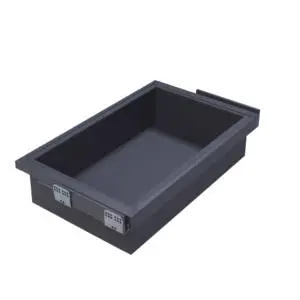EPDM Silicone NBR Rubber Tube Hose Neoprene Pipe Tubing
EPDM Silicone NBR Rubber Tube Hose Neoprene Pipe Tubing
In the realm of industrial and commercial applications, rubber tubes, hoses, pipes, and tubings play a vital role in conveying fluids, gases, and even solids. Among the diverse range of rubber materials used, EPDM, silicone, NBR, and neoprene stand out for their unique properties, making them suitable for specific environments and purposes. Each material brings its own set of advantages, ensuring that there’s a perfect solution for nearly every application, from high-temperature industrial settings to everyday household uses.
EPDM Rubber Tubes and Hoses
EPDM (Ethylene Propylene Diene Monomer) rubber is a synthetic rubber known for its exceptional resistance to weathering, ozone, and heat. These properties make EPDM tubes and hoses a popular choice in outdoor and harsh environments:
- Weather and Ozone Resistance: EPDM rubber can withstand prolonged exposure to sunlight, rain, snow, and ozone without cracking or deteriorating. This makes it ideal for outdoor applications such as garden hoses, automotive weatherstripping, and industrial hoses used in open-air facilities.
- Heat Resistance: With a typical temperature range of -40°C to 150°C (and up to 175°C for specialized grades), EPDM hoses are suitable for conveying hot fluids or operating in high-temperature environments. They are commonly used in heating systems, engine cooling lines, and industrial machinery where heat is a factor.
- Chemical Compatibility: EPDM exhibits good resistance to water, steam, alcohols, and dilute acids and bases. This makes it a reliable choice for water supply lines, steam hoses, and chemical transfer applications where exposure to these substances is common.
- Flexibility and Durability: EPDM rubber maintains its flexibility even at low temperatures, ensuring easy installation and handling. It is also highly durable, with excellent resistance to abrasion and tearing, extending the lifespan of the tubes and hoses.
Silicone Tubes and Tubings
Silicone rubber is a versatile material prized for its extreme temperature resistance, biocompatibility, and purity. Silicone tubes and tubings are widely used in industries where cleanliness and temperature tolerance are critical:
- Wide Temperature Range: Silicone can operate in temperatures ranging from -60°C to 230°C (and even higher for short periods), making it suitable for both cryogenic applications and high-heat environments. This includes uses in ovens, freezers, and industrial processes involving extreme temperature fluctuations.
- Biocompatibility and Purity: Medical-grade silicone is non-toxic, inert, and compatible with human tissue, making it ideal for medical and pharmaceutical applications. It is used in catheters, feeding tubes, and drug delivery systems, where safety and sterility are paramount.
- Chemical Inertness: Silicone is resistant to many chemicals, oils, and solvents, as well as UV radiation and ozone. This makes it suitable for laboratory equipment, food processing lines (where it meets FDA standards), and applications involving harsh chemical exposure.
- Smooth Surface and Flexibility: Silicone tubings have a smooth inner surface that minimizes fluid friction and prevents contamination buildup. They are also highly flexible, allowing for easy routing in tight spaces, such as in electronic cooling systems or medical devices.
NBR Rubber Hoses and Pipes
NBR (Nitrile Butadiene Rubber), also known as Buna-N, is a synthetic rubber celebrated for its excellent oil and fuel resistance. This makes NBR hoses and pipes indispensable in automotive and industrial settings where oil exposure is common:
- Oil and Fuel Resistance: NBR’s primary advantage is its resistance to petroleum-based oils, fuels, and greases. It is widely used in automotive fuel lines, hydraulic hoses, and industrial machinery that handles oil-based fluids, as it maintains its integrity and flexibility even after prolonged contact.
- Temperature Resistance: NBR can typically operate in temperatures from -40°C to 120°C, making it suitable for most automotive and industrial applications. Specialized formulations can extend this range, allowing for use in slightly higher or lower temperature environments.
- Abrasion and Tear Resistance: NBR rubber is tough and durable, with good resistance to abrasion, tearing, and mechanical stress. This makes it ideal for high-pressure applications, such as hydraulic hoses, where the material must withstand constant pressure and movement.
- Cost-Effectiveness: Compared to some other oil-resistant rubbers, NBR is relatively affordable, making it a cost-effective choice for large-scale applications in the automotive and manufacturing industries.
Neoprene Pipe Tubing
Neoprene (Polychloroprene) is a synthetic rubber known for its balance of properties, including resistance to oil, weathering, and flame. Neoprene pipe tubing is valued for its versatility across a range of applications:
- Oil and Chemical Resistance: While not as oil-resistant as NBR, neoprene offers moderate resistance to oils, greases, and many chemicals, making it suitable for applications where exposure to both oil and water is possible. It is used in marine hoses, industrial pipes, and equipment that handles mixed fluids.
- Weather and Ozone Resistance: Similar to EPDM, neoprene withstands outdoor conditions well, resisting sunlight, ozone, and temperature extremes (typically from -40°C to 120°C). This makes it ideal for outdoor applications such as roofing membranes, marine hoses, and outdoor equipment tubing.
- Flame Resistance: Neoprene is inherently flame-retardant, which is a critical property in applications where fire safety is a concern. It is used in industrial hoses, electrical insulation, and automotive components where resistance to ignition and flame spread is necessary.
- Adhesion and Durability: Neoprene bonds well with other materials, such as metals and fabrics, making it suitable for reinforced hoses and composite products. It is also highly durable, with good resistance to abrasion and tearing, ensuring long service life in demanding environments.
Applications Across Industries
Each type of rubber tube, hose, pipe, and tubing finds its niche in various industries:
- Automotive: NBR hoses for fuel lines, EPDM for cooling systems, and neoprene for weatherstripping and hoses exposed to mixed fluids.
- Medical and Pharmaceutical: Silicone tubings for catheters and drug delivery, ensuring biocompatibility and sterility.
- Industrial Manufacturing: EPDM for steam hoses, NBR for hydraulic lines, and neoprene for chemical transfer pipes.
- Food and Beverage: Silicone tubings that meet FDA standards for conveying food products and beverages.
- Marine and Outdoor: EPDM and neoprene for hoses and tubing resistant to saltwater, weather, and UV exposure.
- Construction: Neoprene for roofing and sealing, EPDM for water supply lines, and NBR for hydraulic equipment.
Choosing the Right Rubber Material
Selecting the appropriate rubber tube, hose, or tubing depends on several factors:
- Fluid Type: Consider whether the material will contact oil, water, chemicals, or food products—NBR for oil, silicone for food/medical, EPDM for water/steam.
- Temperature Range: Silicone for extreme temperatures, EPDM or neoprene for moderate ranges.
- Environmental Conditions: EPDM or neoprene for outdoor/weather exposure, silicone for cleanroom or sterile environments.
- Pressure and Mechanical Stress: NBR or neoprene for high-pressure, abrasion-prone applications.
In conclusion, EPDM, silicone, NBR, and neoprene rubber tubes, hoses, pipes, and tubings each offer unique advantages that make them indispensable in their respective applications. Whether you need oil resistance, extreme temperature tolerance, biocompatibility, or weather durability, there’s a rubber material tailored to meet your needs. By understanding the properties of each, you can select the perfect solution for your industrial, commercial, or residential requirements.


